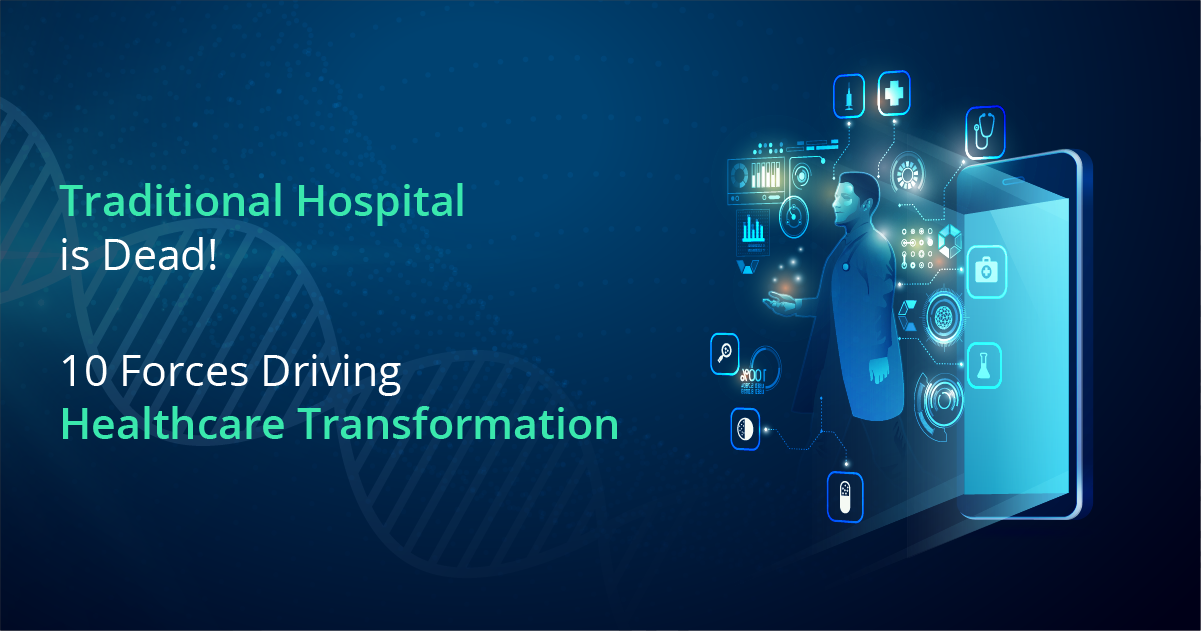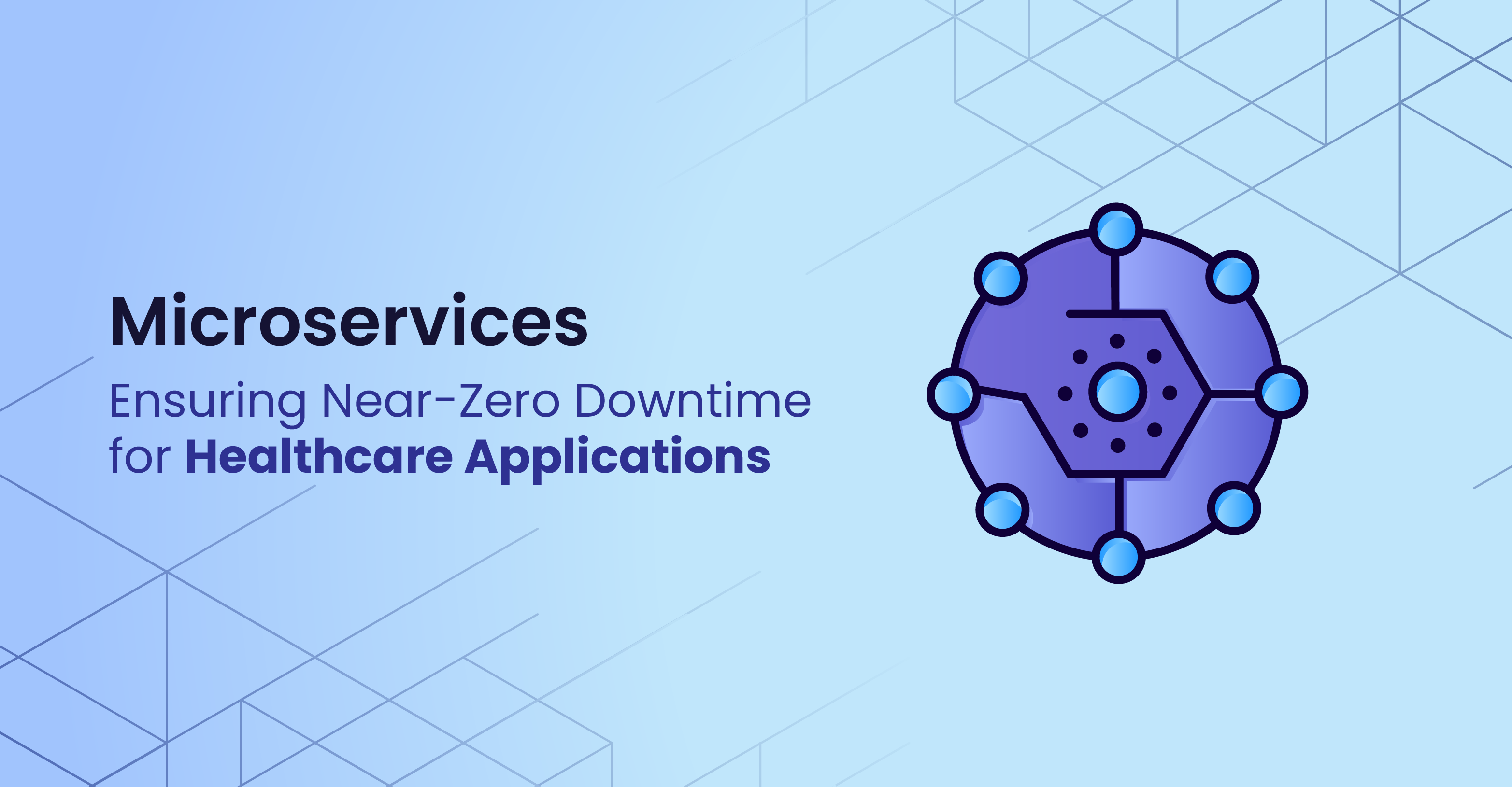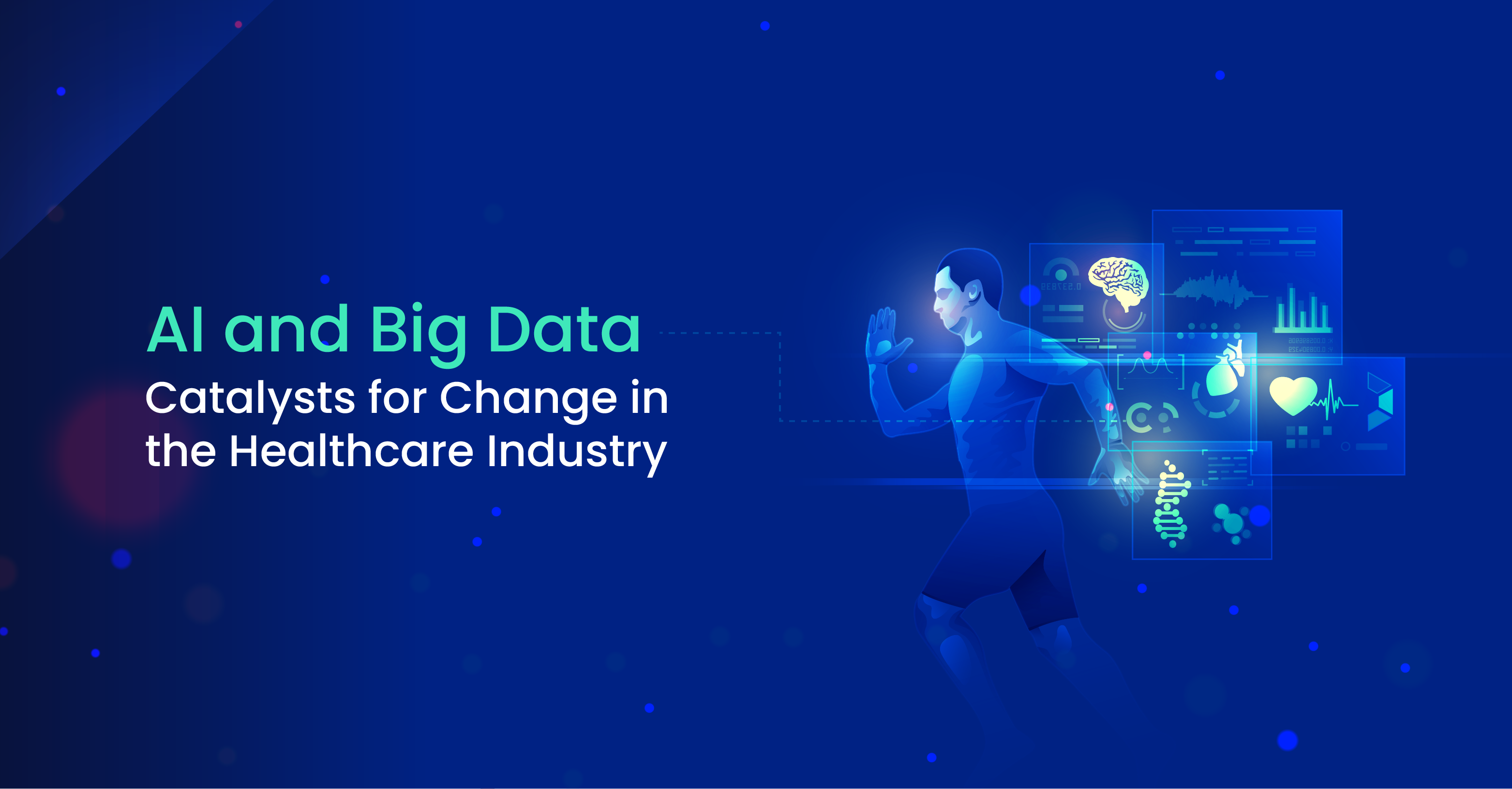The rise of technology has gained significant momentum for many years now; pandemic only acts as an inflection point, a point of no return. mHealth or mobile health applications have been on the rise, but their efficacy has been limited because of various systemic challenges in the global healthcare industry. Now the time is ripe, 2022 will be the year in which companies will lay the foundation of their lasting enterprises; those who are not agile will either be acquired or will perish. Here are some healthcare technology trends that medical institutions, startups and other enterprises must not miss out on.
Digital Transformation (DX) of Healthcare Institutions
Before we delve into the most important trends for 2021, we must understand the underlying phenomenon of DX that would enable us to fully leverage technology.
7 Reasons Why Digital Transformation in Healthcare
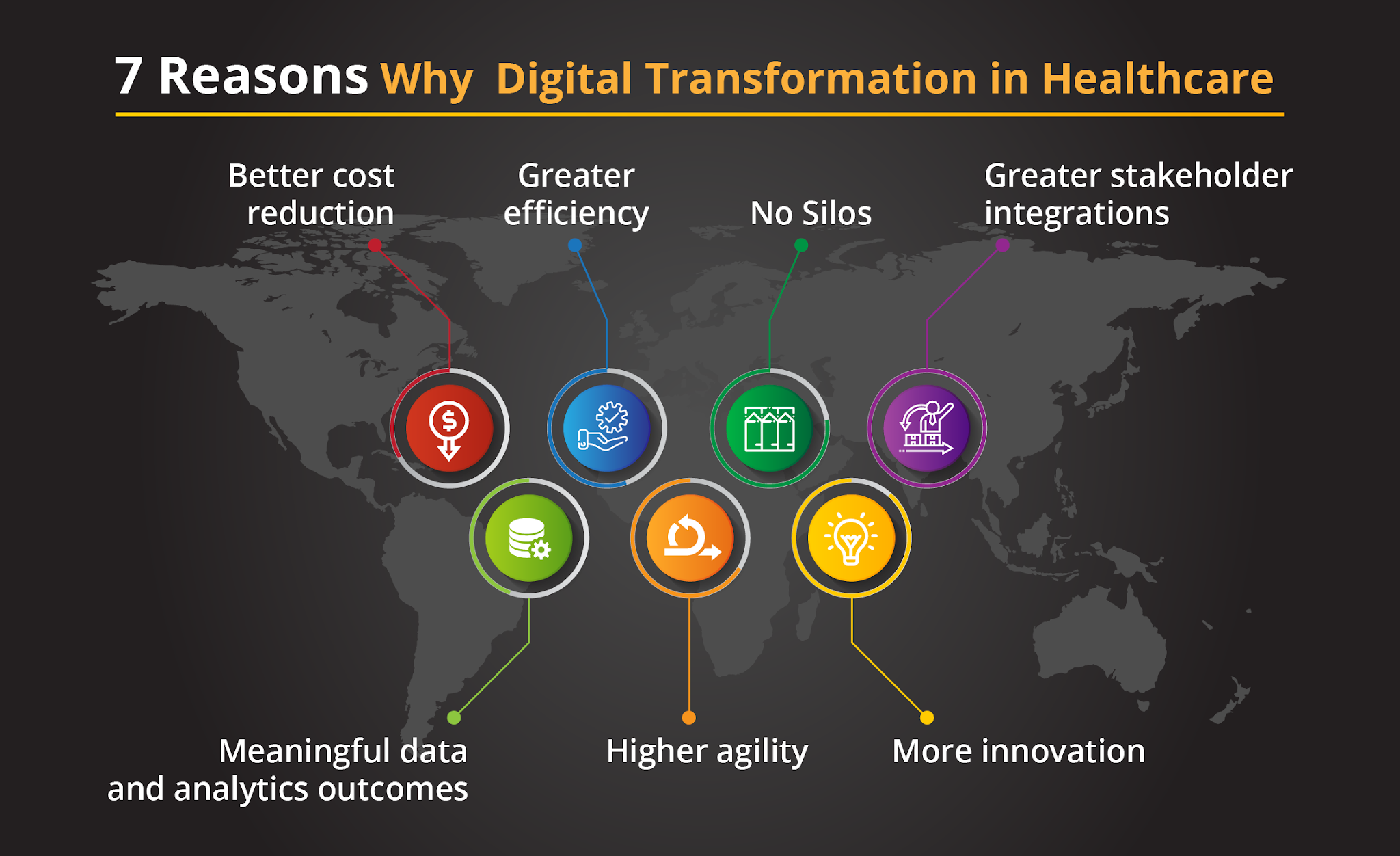
Without a complete DX, healthcare institutions will only use technologies in isolations and miss out on the true value creation with a seamless digital organization.
To know more, explore the most comprehensive guide for DX with step-by-step and latest Insights world leaders.
Healthcare Trends to Watch in 2022
Healthcare Technology Trend #1: Telehealth & Telemedicine
The astronomical rise of telemedicine during pandemic is a trend that is here to stay. The rise is as much as 50 to 175 times the previous years, and the US healthcare spend could come reach USD 250 billion in virtual medicine, according to McKinsey.
In 2019, the global telemedicine market accounted for $45.5 million and is projected to account for $175.5 million by 2026 (Source: Statista).
The Core Advantages of Telemedicine
Overall, the US healthcare industry can save about $305 billion annually with Telehealth technologies.
- Cost Saving for Patients: The telemedicine will reduce the cost of treatment by around 10-15%, and these visits cost between $49 to $250 per month, thus the saving would be substantial.
- Cost Savings for Hospitals: The telemedicine platform of Jefferson County Hospital, JeffConnect, saved around $300 to $1,500 cost per visit to the hospital and $19 to $120 per visit to patients. In other instances other institutions such as Banner Health’s Ambulatory Care program brought down the overall cost by an incredible 34.5% in the first year.
- Better Outcomes: Remote health monitoring has been one prominent area where large value is being created. For instance, one diabetes cohort created impressive outcomes and estimated cost savings of $3,855 per patient per year.
Must Have Features for Your Telemedicine Platform
- Security features to ensure no data theft and attacks
- Real time location services
- Appointment management
- Diverse Communication Modes: Video/audio, secure messaging
- Healthcare provider reviews, visit history
- Wearable integration to enable wireless testing
Technology Trends Consider:
- The most robust telehealth services are provided through telemedicine apps. One of the most important technologies behind telemedicine apps is WebRTC, an open-source API-based system to connect web browsers with mobile applications.
- Electronic health records (EHR) are an essential integration into your telemedicine app as it facilitates patients and healthcare providers to see patient medical records in the app.
- Interactive Voice Response (IVR) enables the application to relay communication to patients through digital speech.
- Google fit and Apple HealthKit integration is a valuable addition that allows the app to access existing health information available on a patient’s smartphone.
- Cloud-based server solutions are also critical for all of the above processes to function.
Healthcare Technology Trend #2: Telehealth with The Internet of Medical Things (IoMT)
With the union of IoT with telemedicine and telehealth technologies, a new Internet of Medical Things (IoMT), has emerged. The Healthcare industry has leveraged IoMT in such a big way that accounts for 30% of the share of the mammoth IoT market which will be as big as $6.2 trillion by 2025.
IoMT will become an integral part of healthcare at a brisk pace, and healthcare institutions must aggressively think about leveraging it to the fullest.
Popular Applications
IoMT devices and apps are playing a vital role in tracking and preventing chronic illnesses. The use of several wearables, search as ECG and EKG monitors, BP instruments allow doctors to monitor patients remotely.
Smart pills: IoMT will also facilitate future advancements such as the smart pills (approved in 2017 by the FDA), practitioners have the power to exercise many innovative solutions for providing care, effectively, and remotely.
With IoMT facilitating Telehealth, here are are few healthcare Technology trends based on use cases that have recently rise and will continue to do so:
- Assisted Living Technologies
- Disability and Rehabilitation Assistive Tech
- Speech Assistive Tech
- Chronic disease monitoring technologies
Healthcare Technology Trend #3: Artificial Intelligence and Machine Learning
Some consider it hype, others an essential technology for future business battles. The AI market in healthcare is anticipated to expand tenfold by 2025 and become a prodigious $13 billion industry; source: Global Market Insights. This rise is on account of burgeoning applications of AI in healthcare.
- Virtual Assistants for Nursing
- Cancer diagnosis and custom treatment
- Radiology diagnosis and AI-powered radiology assistant
- AI-enabled chatbot technology
- Neural network for clinical trials
- Reducing drug development cycles
Smartphones, wearables, and growing IoMT devices and ecosystems increase in available data sets for ML software to analyze. Many HCI are already deploying AI, many startups and small organizations are also deploying AI for augmenting efficiency and productivity along with greater innovation.
Healthcare Trend #4: Privacy Issues
In 2021, privacy would remain a vital topic in health technology, especially with HIPAA compliance. Even though cloud computing makes storing and retrieving data easy and efficient, Protected Health Information (ePHI) regulations are very stringent and institutions strive to strike better compliance.
Data breaches and security failures can damage the reputation of any company hence moving forward security is without a doubt an issue of cardinal importance.
Healthcare Technology Trend #5: AR/VR/MR in Healthcare
AR/VR headsets help patients suffering from dementia to cognitive impairments. These technologies help students in training and at affordable costs. It even helps surgeons with a unique opportunity to get ready for the most unpredictable surgery. These even help in VR pain management. This rise is steady and would slowly rise to higher prominence.
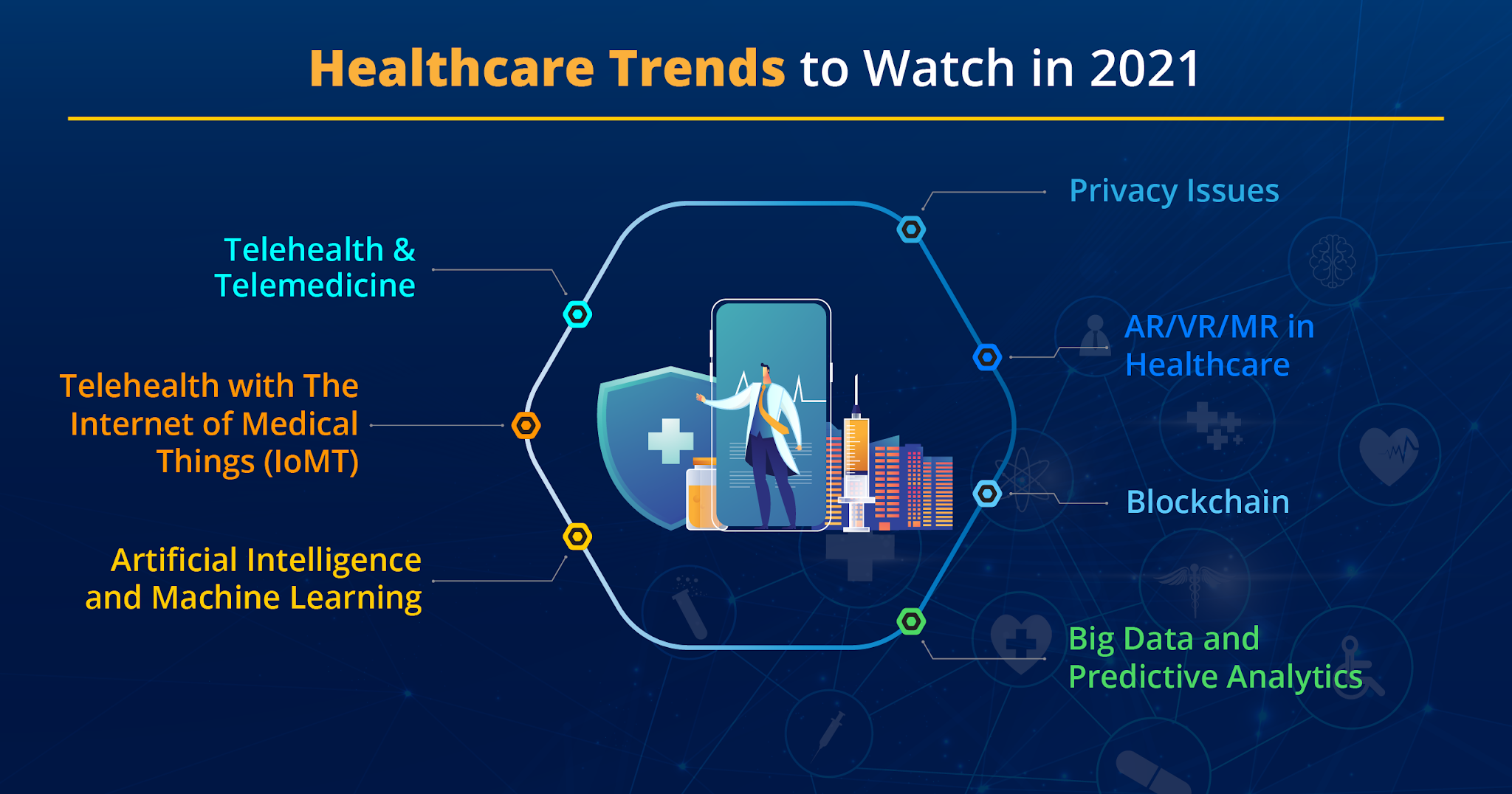
Healthcare Technology Trend #6: Blockchain
Integrity, security, accessibility, and portability of data have become a necessity in a world where the virtual business has flooded the market with data. Being a sensitive sector, data security and safe sharing are paramount, and here Blockchain is an ideal technology.
Blockchain’s peer-to-peer system facilitates numerous users to securely access a common immutable digital ledger, thus ensuring the highest credibility.
Healthcare Trend # 7: Big Data and Predictive Analytics
The rise of computing capabilities, advanced database, and analytics technologies has prompted big data in the field of healthcare. A tremendous amount of data is being created from medical diagnosis and imaging data to fitness stats, and big data analytics tools give the power to process them for actionable information that can help the patients and HCIs. This power can help make optimal decisions and is thus on the rise in healthcare.
Conclusion
The rise of digital technologies has surged on account of technological advancements as well as, pandemic’s impetus. The rise is also because the crisis has exposed the old faultlines of our healthcare system and the need for technology-led innovations became dire.
These megatrends have just begun to pick up, and we will see many advancements and a majority of them will become an integral part of the way healthcare gets delivered and will also share how we consume healthcare services.
 All Posts
All Posts
